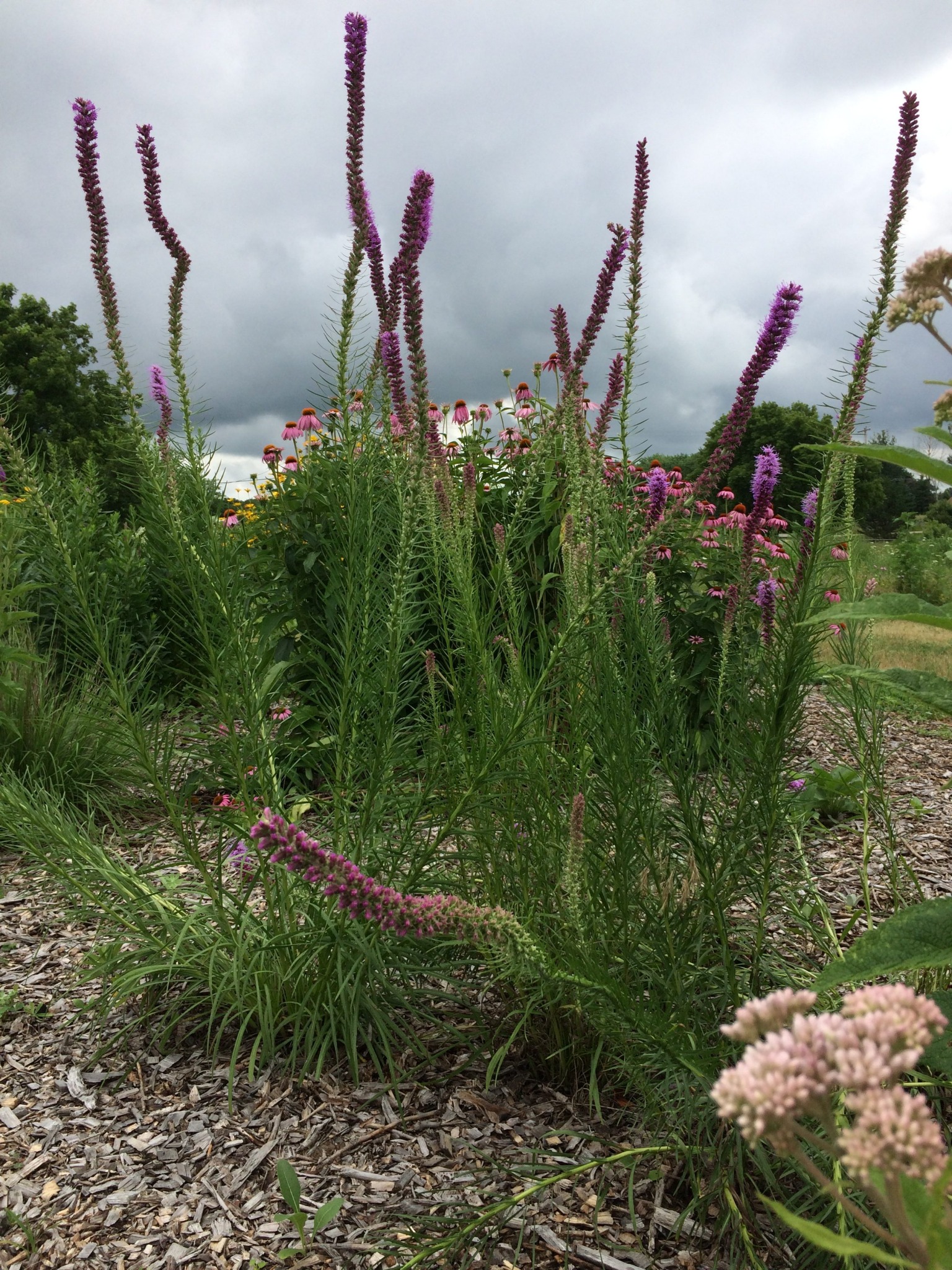Description
OUT OF STOCK
Tall, erect, purplish- pink spike in August-September
Tall, erect, purplish- pink spike in August-September
OUT OF STOCK
Tall, erect, purplish- pink spike in August-September
One sided, horizontal, purple tinged spikelets looking like a row of eyelashes above the petite clump of thin grass blades, July-October
Size: 2' x 12"
Care: sun in dry to moist well-drained soil
Native: all US except SE & NW, Wisconsin native
Wildlife Value: Host for caterpillars of several skipper butterflies. Deer resistant
Awards: Great Plants for Great Plains Grass of the Year 2008
For the Navajo this was a “life medicine” and an antidote to an overdose of “life medicine.” Also used to cure sore throats and cuts – chew on the root and blow on the cut. Navajo girls carried it in the Squaw Dance. Hopi made baskets from this grass. Zuni made brooms & hairbrushes from it. Several tribes ate this & made bedding for their animals from this. Lakota children played a game using this grass: Most of the stems have two flowers on them. Children competed to see who could find the stems with three flowers, like finding a four-leaf clover. First collected for horticulture by Humboldt & Bonpland who scoured Latin America from 1799-1804.
The description in the Chiltern Seeds catalog cannot be improved: “This is the most elegant and refined of the North American prairie grasses …the finest texture composed of the thinnest of thin, thread-like, glossy green blades,.. in autumn turning deep orange before fading to a light copper for the winter. In late summer the plants bear, on very slender stalks high above the foliage, unbelievably delicate, graceful flower panicles, excellent for cutting. ”One of internationally known garden designer Piet Oudolf’s 100 “MUST HAVE” plants, Gardens Illustrated 94 (2013)
Size: 2’ x 2’
Care: Full sun in well-drained soil
Native: from Canada in the north to Texas in the south, Wisconsin native
Wildlife Value: seeds are food for birds
Awards: Missouri Botanic Garden Plant of Merit & Great Plants for Great Plains Grass of the Year.
Sporobolos is Greek from sporo meaning seed and ballein meaning to cast forth because the seed readily falls from the flower (or dropseed, the common name). Ojibwa “Medicine Society” used roots to cure sores & “remove bile.”
Brilliant orange with purple spots, turks-cap lily with dramatic, swept-back petals blooming late summer to early fall. Slow to mature but when it does it bears up to 40 flowers on one plant.
Size: 10’ x 12”
Care: Sun in moist to moist-well-drained, acidic soil
Native: from VT to Fl & west to Mississippi River, Wisconsin native
Lilium was named for the Greek word for smooth, polished referring to its leaves. This collected before 1665. In his 1665 book, Flora, seu de Florum Cultura John Rea, nurseryman and author, called it the “Virginia Martagon.” Sold in America’s 1st plant catalog, Bartram’s Broadside, 1783. L.H. Bailey (1913): “The most magnificent and showy of native North American species, well worthy of extensive cultivation.”
Cheerful yellow daisies all summer, non-stop.
Size: 2-3' x 2'
Care: Full sun well-drained to moist well-drained soil, drought tolerant
Native: Eastern Europe
This promiscuous flower sports maize colored daisies with ferny, aromatic foliage. The name Anthemis evolved from anthemon meaning “free flowering,” which describes the plant’s carefree, June through fall, blossoms. Philip Miller illustrated Marguerite in his 1750’s Dictionary. The flower was used to dye wool and to make tea.

